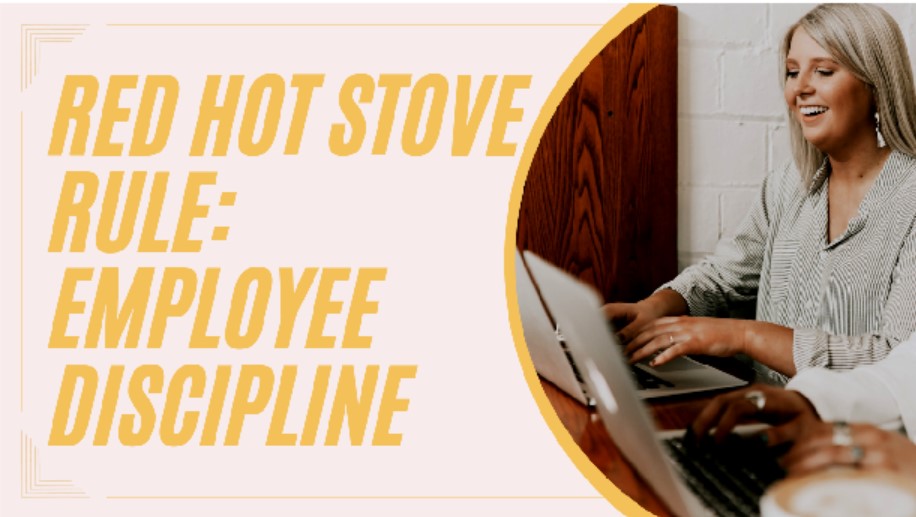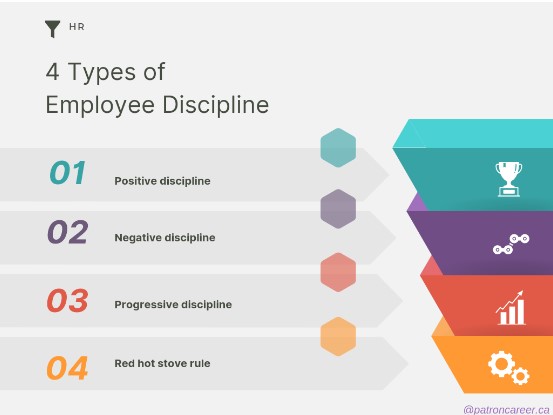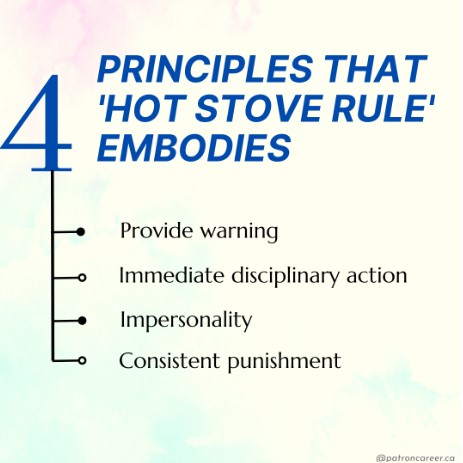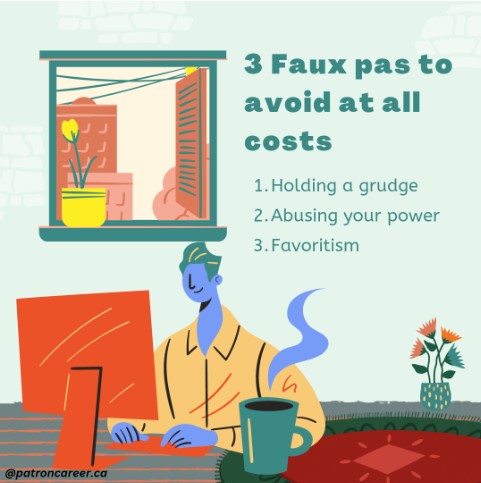
Employer Branding
21 February, 2023
Patron Career Staffing firmly believes in adopting a tailored approach to meet temporary and permanent recruitment needs. We safeguard the interest of our clients by finding such workers who are knowledgeable and reliable.
About UsNeed help? Make a Call
32 Dundas Street East Unit A, L5A1W2

Managers have been incessantly hunting for ways to manage conflict and instill discipline in their organizations. Although sometimes in the work routine, senior managers have to punish their team members or colleagues, and normal functioning often gets disturbed owing to awkwardness and resentment in the office. Working and managing a chain of people can get a little clumsy easily, but consistent guidelines can help executives and HR to avoid unpleasant situations.
Learn the overview of employee discipline along with one of the notable methods to not only curb inappropriate behavior but also use corrective measures for the same with- the red hot stove rule.
First, let us understand the meaning of the term employee discipline.
What Is Employee Discipline?
Often there arises the need to regulate and control irrational and unsuitable behavior and activities of employees in the work area. Discipline is the linchpin that brings stability to the organizational culture. It acts as a controlling factor that offers employees a healthy chance to overcome their errors and motivates them to achieve merit in their work life.
Also read: Employment Standards Act

While many may associate disciplinary action with punishment and control, that is not true. It helps to deter individuals from performing certain actions in the future, imposes orderly conduct in the workforce, boosts employee morale and peace, and accelerates the high-quality performance of teams.
There are tons of definitions for the term discipline but simply it means effecting obedience, responsibility, and orderliness in the workplace without resulting in hostility and resentment amongst people. All managers require support and respect from their subordinates to function effectively and get things done, hence they must adopt healthy ways to retain the viability of their business.
To connect the dots of this relationship between the two concepts, we must know what exactly this rule ensues. This principle was propounded by Douglas Murray McGregor in the early 60s. He was an illustrious managerial personality who had educated the world about human resources and its practices. His theory of 'X' and 'Y' was also a great success and the red hot stove theory also follows similar guidelines.
The primal concept on which this theory is based on the notion that bestowing discipline is just like touching a hot stove. Conceptually, to mete out discipline, an employer should resort to some kind of punishment if employees fail to comply with disciplinary guidelines despite the warnings. He insisted on administering Discipline that’s free of resentment.
Attributes of the Hot Stove Rule
McGregor highlighted a few characteristic features of a sound disciplinary system that are explained below:

1. Immediateness
An analogy is found between touching a hot stove and undergoing discipline. When a person touched a hot stove, it gives you burns not later but instantly.
In the managerial context- Likewise, effective disciplinary measures must be taken quickly when an error occurs to dissuade employees from violating organizational norms again. He/she is made to realize their mistakes immediately.
2. Previous warning
As one approaches a hot stove, they are automatically warned of danger ahead by its exaggerated heat. One will proceed with caution if the peril is foreseeable.
In the managerial context- employees must be notified earlier of the punishments or specific consequences that will be imposed if found guilty of a violation of the disciplinary process or poor unacceptable conduct. This will alarm your workforce to follow all rules, procedures, and company policies.
3. Consistency
Whoever tries to touch a hot stove burns, in the same manner, no matter how many times they touch it.
In the managerial context- consistency allows a company to retain its structure. So, disciplinary action should be consistent across all departments given the fact that a person commits the same disqualified act. Untoward leniency and strictness are bound to generate resentment.
4. Impersonal
There is no favoritism when it comes to getting burned by a hot stove.
In the managerial context- when it comes to organizations, the punishment should be mainly focused on the offense and not on who is committing it. Disciplinary action must be in the wholesale interest and welfare of the entire organization covering all employees and workers.

So disciplinary process will only succeed if employers explain all company rules, regulations, and policies to employees as part of induction, orientation, and training programs. They must be made aware formerly this to avoid any unwanted legal action.
Related: 3 MEASURES TO PREVENT WORKPLACE VIOLENCE
The red hot stove rule of employee disciple is one of the most effective methods of administering and maintaining discipline. If you are hesitating to offer discipline to colleagues or subordinates, then this is high time for you to inculcate the hot stove rule to eradicate turmoil and bring stability to your company.
Like what you just read? Head on to https://www.patroncareer.ca to find more such informative articles and blogs! Subscribe to our weekly newsletter and stay up to date with the latest HR news, trends, and job offers.
For a staffing company like ours, Patron Career Staffing adopts a tailored approach to deliver high-tech solutions for all temporary and permanent recruitment needs of our clients all over the GTA. We have a multifaceted understanding of the pros and cons that temp and perm jobs can offer to employees and our clients.
